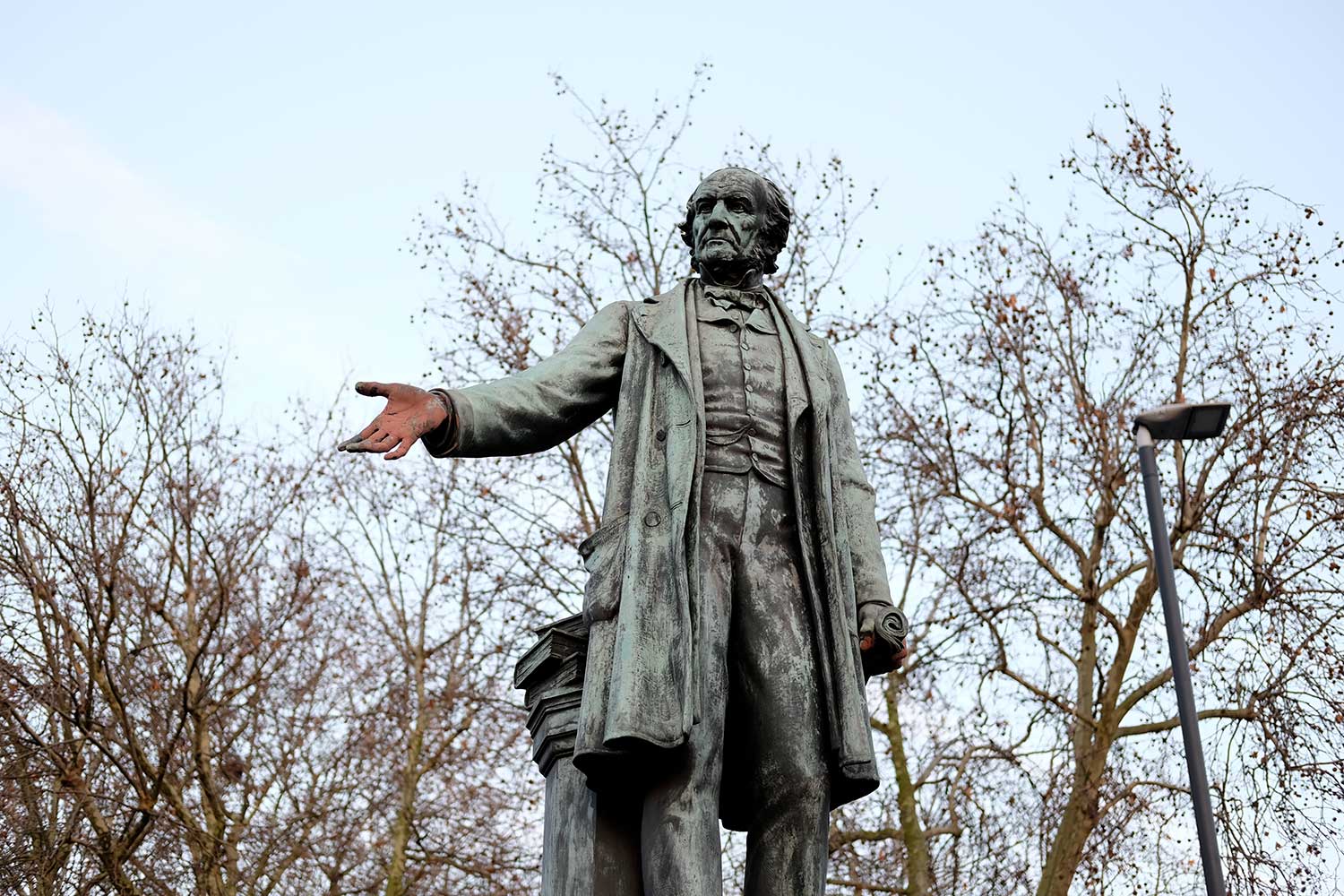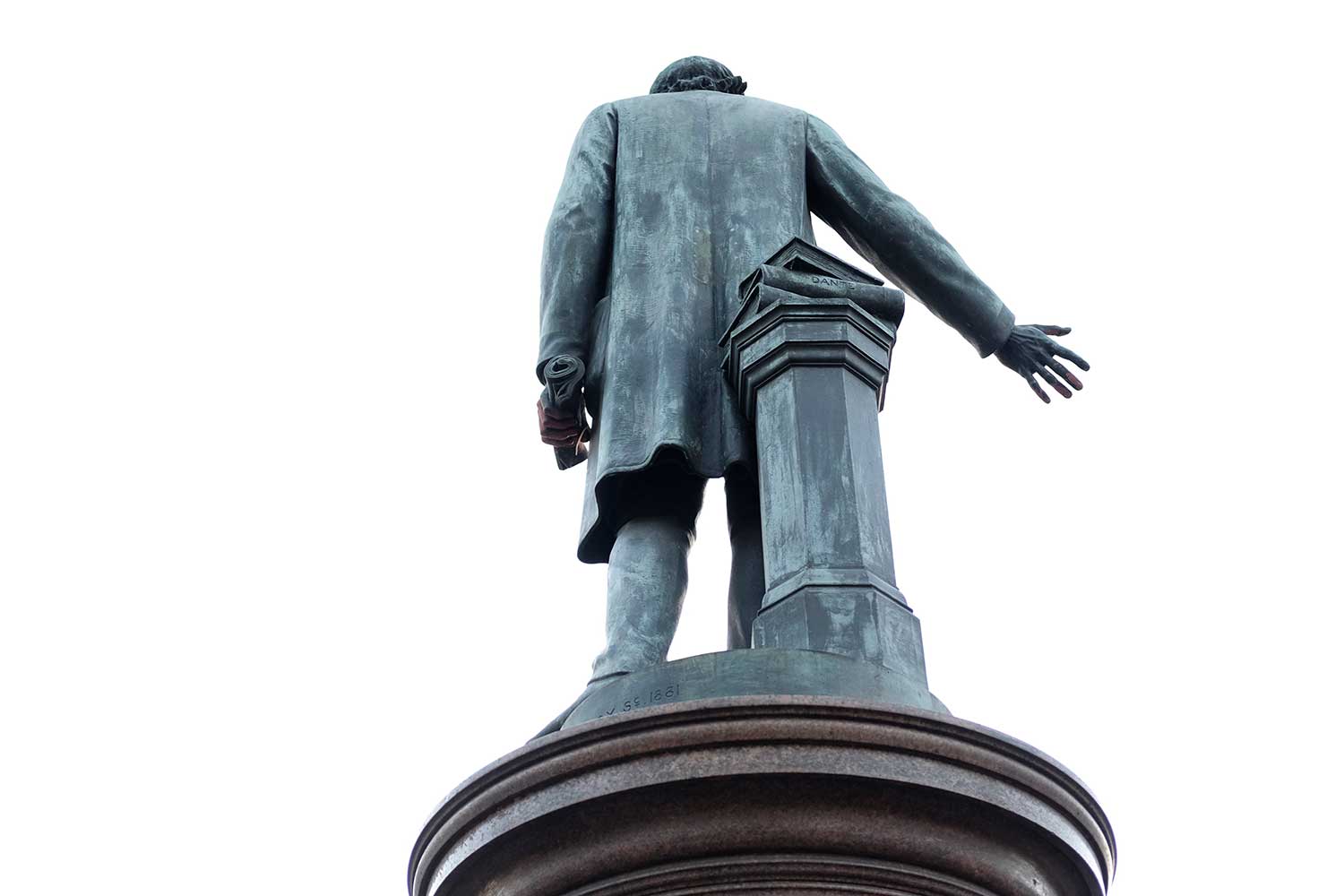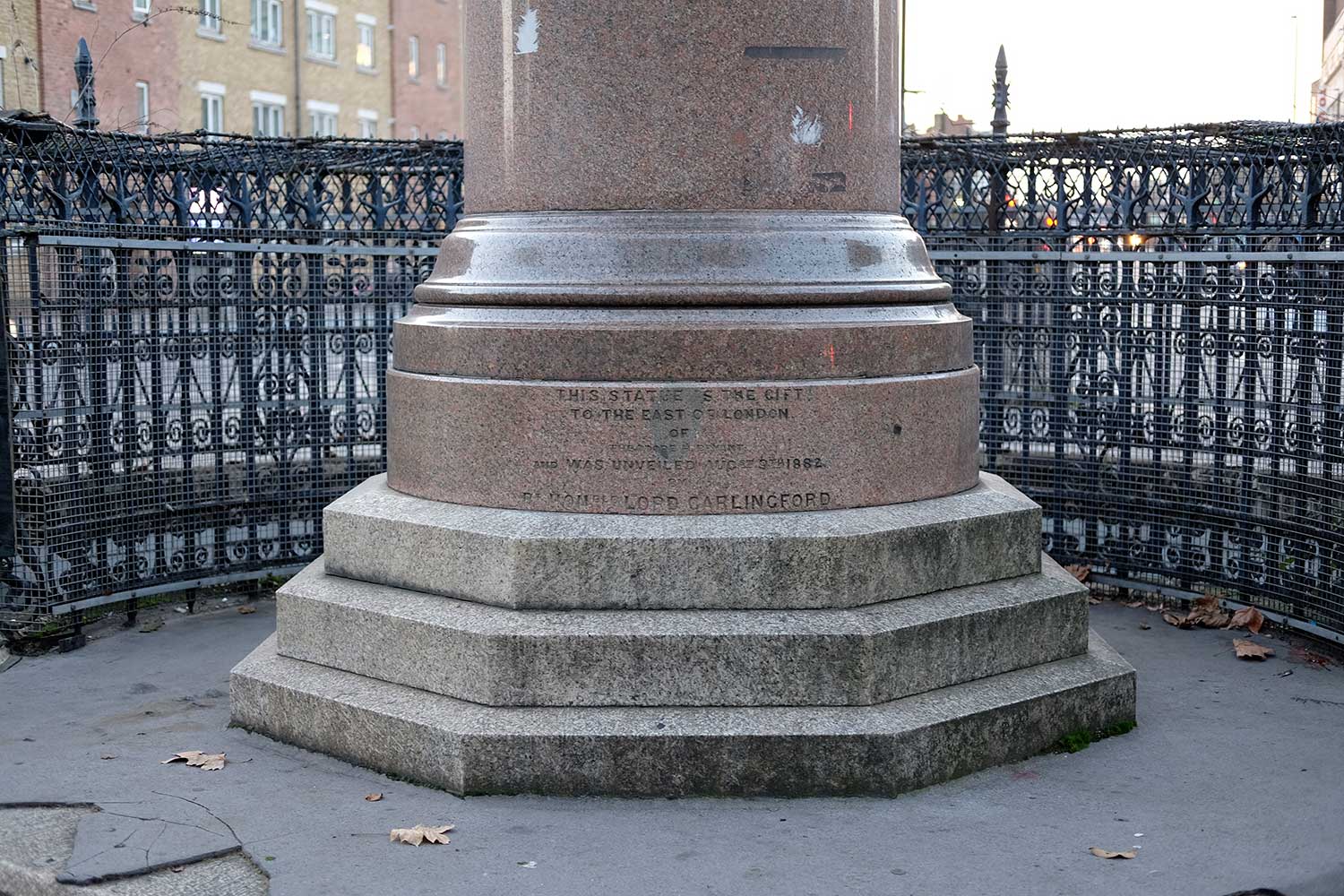The red hands of William Gladstone’s statue
Take a walk down Bow Road and you will meet a man with red hands. Draped in a dusty Victorian frock coat, right arm outstretched, the statue of William Gladstone has stood before Bow Church for over 150 years. His imperious stance is not unusual in a statue, but the colour of his hands is.
The matchgirls flex their muscles
The statue’s past is bound up with that of the Bryant and May matchgirls. William Gladstone, four-time Liberal Prime Minister, was popular with East End Irish due to his support for Home Rule. Theodore H. Bryant, who co-owned the nearby factory on Fairfield Road, commissioned Albert Bruce-Roy to make a statue. Completed in 1882, it would be ‘a gift to the east of London.’
In the build up to the statue’s unveiling rumours circulated that it had been paid for by docking a shilling from the wages of Bryant and May factory workers. Writing six years after the fact in 1888, social activist Annie Besant painted a vivid picture of the unveiling:
‘So furious were the girls at this cruel plundering, that many went to the unveiling of the statue with stones and bricks in their pockets, and I was conscious of a wish that some of those bricks had made an impression on Mr. Bryant’s – conscience. Later they surrounded the statue – “we paid for it” they cried savagely – shouting and yelling, and a gruesome story is told that some cut their arms and let their blood trickle on the marble paid for, in very truth, by their blood.’
Annie Besant
Gladstone’s hands have been coated in rusty red ever since, a tribute to the plight of Bryant and May factory workers, whose fury came to a head with the London matchgirls’ strike of 1888. To this day cleaning the hands is a pointless exercise. The marks always come back.
Tonypandy?
The story is so deeply ingrained in local consciousness that it’s often bandied about as self-evident fact, like the sky being blue. For a 150-year-old rumour to be reported as fact in the likes of the New Statesman speaks to the power of its imagery. But the rumours were never confirmed. There is no record of it being true.
The murky origin of Gladstone’s hands brings to mind Josephine Tey’s 1951 novel The Daughter of Time, which explores how the outrage felt at historical event overpowers whether it happened or not. An example it explores is the Tonypandy riots – a series of confrontations between Welsh coal miners and police in 1910 and 1911. Rumours abounded of miners slaughtered by rifle fire. Not a single shot was fired.
The story was useful to Annie Besant, who was integral to the successes of the matchgirls’ strike in 1888. The timing of her writing is no coincidence. It tied the statue to her cause, providing a vivid mythos of exploitation and class division.
East London’s red right hand
And that speaks to the true symbolism of William Gladstone’s red hands. To get bogged down in their exact historiography is to misunderstand their importance. Then and now they are quiet acts of vengeance.
Whether or not Bryant and May skimmed money off workers’ wages, the statue represented a social gulf. A factory director commissions a grand bronze statue of an acting Prime Minister and arranges for it to be unveiled by a Lord. Overworked, underpaid factory workers are then trudged down, retching from white phosphorus, and expected to receive this ‘gift’ with grace and gratitude. The scene wouldn’t look out of place in a Dickens novel.
The struggle for workers’ rights that raged around the statue has long since been won. The Bryant and May factory is a gated residential estate now – Bow Quarter. You would think the red would be allowed to fade, but not so. Cleaning the hands remains a futile task. The bronze was scrubbed in the build up to the 2012 Olympics, and by the next morning they were freshly crimsoned.
Facing west, staring down the city’s centres of power, William Gladstone’s statue has evolved into a symbol of solidarity amongst the downtrodden. Annie Besant’s concluding remarks on the statue cut to the real reason why its hands are still stained:
‘Born in slums, driven to work while still children, undersized because underfed, oppressed because helpless, flung aside as soon as worked out, who cares if they die or go on the streets, provided only that the Bryant and May shareholders get their 23 per cent, and Mr. Theodore Bryant can erect statues and buy parks?’
Annie Besant
Swap out the names and that rhetoric isn’t as distant as we would like to think. For as long as those words ring true, for as long as injustice is felt in East London – real or imagined – you can count on the redness of William Gladstone’s hands.



If you liked this article, you might be interested in reading about Bow’s Suffragette Secrets


What about the child slave labour in the sweat shops of Asia? Why aren’t people as passionate about that ongoing horror – a horror we fuel i our consumerist, throw-away life-style West? Could it be that at it’s heart, the western left-wing protest movement has, at it’s a heart, a desire to overthrow democracy, the rule of law, and bring the West to its knees? And could it be because people – all of us unless we have had a changed heart – are anger and bitter on the inside, and seek revenge rather than healing, to blame others and not take personal responsibility for our actions, for for the way we live our lives? Does this justify destroying property, trashing and looting? I think not. What we all need is the mercy of Jesus, who knows what it’s like to suffer injustice. Who heals and forgives and restores all who come to him. A journey that, it appears, George Perry Floyd Jr. had made during or after his jail sentence.
The fact that the BLM movement, a peaceful protest, has been hi jacked by anti capitalists should alarm us for the fact that it has moved from legal to lawless. You have to ask yourself, if not stopped by a seemingly apathetic government and Mayor, where will it end? There are very dangerous precedents being enacted right now.
The question of the future of our statues symbolising our past culture and history should, after looking at all the true facts behind them, be put to democratic vote. I might mention though, if all manifestations of a past culture we do not agree with were to be destroyed, there would be very little left in our libraries and art galleries.
Finally I have to say in a way I am glad the protest has ceased to be only about injustices to black society as clearly slave culture was alive and well all over the world and all through time. Right now slavery is rampant in most corners of the earth and we should be addressing that. Capitalism does not need destroying but it surely does need restraining.